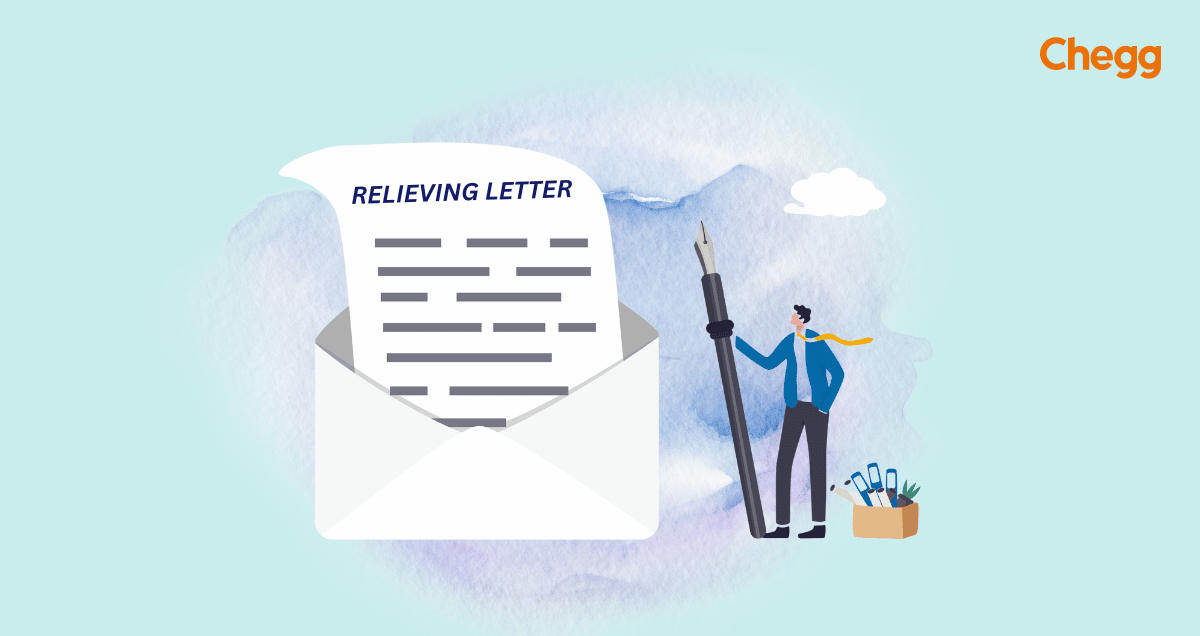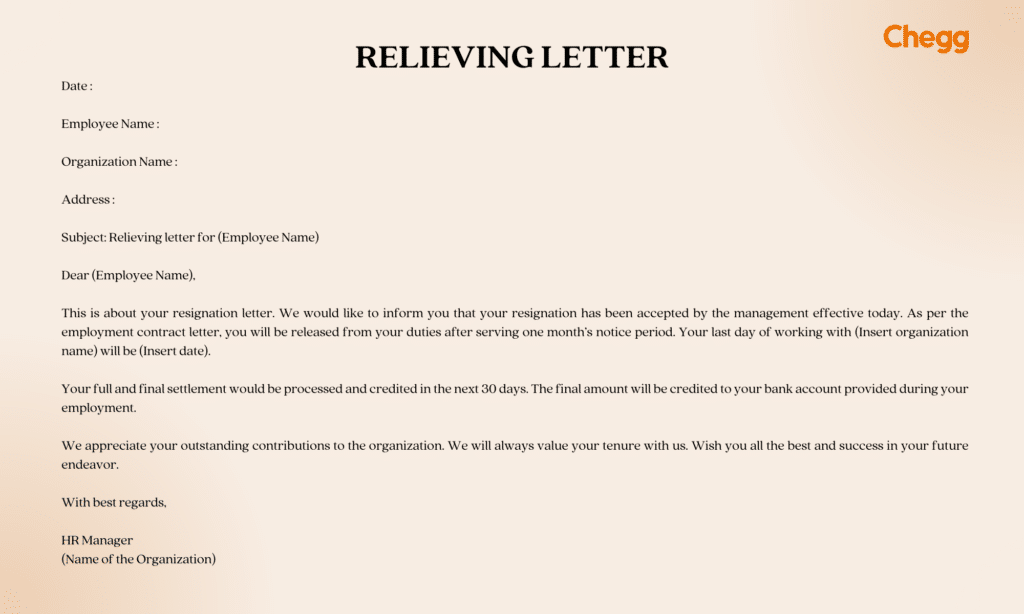

Quick Summary
In job transitions, a relieving letter plays a vital role in ensuring a smooth process. This official document confirms the end of an employee’s tenure with their current employer and verifies that all responsibilities have been cleared. It is an essential record that signifies the conclusion of the employment relationship, providing closure for both parties. Typically, a relieving letter includes important details such as the employee’s final working day, the effective date of their release, and confirmation of the resignation acceptance.
The relieving letter serves multiple purposes. For employees, it helps facilitate a seamless transition to a new job, as many organizations require this document as proof of proper closure with the previous employer. For employers, it serves as an official record of the employee’s departure and ensures transparency, protecting both parties by documenting the end of the employment relationship.
Drafting a proper relieving letter is crucial to include all necessary details and communicate them clearly. Whether you are an HR professional handling employee exits or an individual preparing to move to a new role, understanding and utilizing the correct format ensures the document serves its purpose effectively. A well-structured relieving letter helps avoid any misunderstandings or complications in the future.
This article highlights the importance of a relieving letter and offers sample formats to guide you in creating the perfect document. Whether you’re issuing or receiving one, dive in to learn how to handle this essential part of the job transition process with clarity and professionalism.
Also Read: Resignation Letter Format with Samples
A relieving letter is a formal document provided to an employee when they leave an organization. This official letter formally acknowledges the end of the employee’s roles and responsibilities. Each organization has its specific format that includes crucial details. The document serves to confirm the employee’s resignation and specifies their last date of employment.
Most companies ask for a relieving letter at the time of joining. Usually, it is prepared by the HR Department. The letter consists of information like the final date of employment, joining date, CTC, job responsibilities, etc. The format for an employee might differ from place to place.
A relieving letter is a formal document that officially confirms an employee’s release from their roles and responsibilities within a company. It serves as a concise record, consolidating all essential details such as the employee’s tenure, last working day, and confirmation of resignation acceptance. This document ensures transparency and clarity during the transition process, making it an important part of the resignation procedure.
For large companies, issuing a relieving letter is a mandatory requirement as it fosters trust and reliability between the employer and employee. It also marks the formal conclusion of an employee’s service with the organization, ensuring a smooth exit. A properly structured relieving letter helps maintain professionalism and serves as an essential reference for employees when joining a new organization.
Here is why the relieving letter is important:

A relieving letter follows a specific format, as it is a professional and formal document. The relieving letter format for employee is a crucial aspect, ensuring the letter is clear and well-structured. It officially acknowledges the end of an employee’s tenure and must be drafted in a professional tone.
The relieving letter format is generally consistent across all organizations. Using simple and concise language is key to creating an effective letter. This ensures the document is easy to understand and avoids unnecessary complexity. A well-crafted relieving letter not only maintains professionalism but also ensures smooth communication between the employer and the employee during the transition process.
Here is the important information necessary for the same:
Date [DD/MM/YYYY]
Employee’s Name
Employee Designation
Employee ID
Company/Organisation Name
Address
Subject:
Salutation [Mr, Ms, Mrs, Dr] Name,
The first paragraph is for the resignation information. Confirm acceptance of the resignation of an employee from the designation. Mention the last day of work. State the date when the employee is released from all roles and responsibilities.
The second paragraph is to assure the employee that all due will be settled. Mention the date or number of days when the due will be settled or the customer will be paid in full. Express appreciation for the employee’s contribution. Also, wish you good luck in any future endeavours.
Sincerely/Warm Regards
Employer’s Name
Designation

A relieving letter is a formal document that provides essential details about an employee’s departure from a company. It typically includes the employee’s name, designation, last working day, and the acceptance of their resignation. Additionally, it may confirm the completion of the notice period, clearance of dues, and handover of responsibilities. These details ensure clarity and serve as an official record of the employee’s exit from the organization.
The relieving letter word format includes the following details:

Here are two samples of Relieving Letters:
Date
To,
Employee Name
Job Title
Employee ID
Address
Subject: Reliving letter for (Employee Name)
Dear (Name),
We hope you are doing well. This letter is to acknowledge acceptance of your resignation dated (Insert date, month, and year). We wish to inform you that you are relieved from your position of (Insert designation) with (Insert company name) effective from (Insert date, month, and year).
It is to inform you that your full and final payment will be settled within 30 days from your last working day. We appreciate your contributions to our organization. It has been invaluable in our growth. Wish you all the best of luck in all your future endeavours.
With Regards,
(Name)
HR Manager
(Authorised signature)
Date
Employee Name
Organization Name
Address
Subject: Relieving letter for (Employee Name)
Dear (Employee Name),
This is about your resignation letter. We would like to inform you that your resignation has been accepted by the management effective today. As per the employment contract letter, you will be released from your duties after serving one month’s notice period. Your last day of working with (Insert organization name) will be (Insert date).
Your full and final settlement will be processed and credited in the next 30 days. The final amount will be credited to your bank account provided during your employment.
We appreciate your outstanding contributions to the organization. We will always value your tenure with us. Wish you all the best and success in your future endeavor.
With best regards,
HR Manager
(Name of the Organisation)
The relieving letter samples above provide a clear idea of how to draft a formal letter. The language used should be professional, concise, and easy to understand. This ensures the document maintains a professional tone while effectively conveying the necessary information.
A relieving letter is issued to the employee after their resignation is accepted. It officially confirms that the employee has been relieved of their duties and marks the conclusion of their tenure. Including all relevant details in a structured format is important to ensure clarity and professionalism in the communication.
Here are a few things to consider while writing a relieving letter:
Most organizations have a set relieving letter format. As soon as the employee resigns and is accepted, the organization must provide the employee with the formal document.
As an employee, follow the formal procedure to request the letter by writing to HR:
After submitting their resignation letter, the employee requested a relieving letter. This request is a standard step in the resignation process, as the relieving letter serves as an official document confirming the employee’s release from their duties.
The relieving letter is typically issued after the resignation is accepted and all formalities, such as the notice period and clearance process, are completed. It provides a record of the employee’s departure and is often required when joining a new organization. Ensuring the request is processed professionally helps maintain smooth communication between the employer and employee during the transition.
Many employees often overlook the importance of a relieving letter and mistakenly confuse it with a resignation letter. A resignation letter is written by an employee to formally request their resignation from a position. On the other hand, a relieving letter is issued by the employer, confirming the acceptance of the resignation and officially releasing the employee from their duties. It is an essential document that validates the employee’s smooth exit from the organization.
A relieving letter is important for both employers and employees. For employers, it serves as an official record of the employee’s departure and acknowledges the end of their tenure. It ensures that the notice period is completed and confirms the employee’s release from all company obligations, including the clearance of any pending dues or settlements. For employees, this document is crucial when joining a new organization, as it demonstrates a proper exit from the previous company.
Using pre-designed templates can make drafting a relieving letter more straightforward and efficient. Customizable formats allow employers to quickly create a formal and professional document tailored to specific needs. This article offers key information, examples, and relieving letter templates to help employers simplify the process and provide clear, well-structured communication during employee transitions.
The relieving letter acts as formal communication of releasing an employee from their job. New jobs or joining often demand the letter. It mentions necessary details like the date of joining, last working day, CTC, job responsibilities, etc. Also, It acts as proof that the employee is no longer working with the previous organization. It validates the acceptance of resignation.
Relieving letters are typically issued by the HR department in most companies. However, managers or senior management can also provide them, as they are authorized to do so. This ensures flexibility in the process while maintaining the official nature of the document. Both are valid and recognized by organizations.
A terminated employee is eligible for a relieving letter if they have completed more than six months of employment. However, the letter will include the reason for termination, ensuring transparency about the circumstances of their exit.
Experience letter mentions the employee’s work experience with the organization. It mentions the tenure, designation, and job description. It includes the employee’s service history.
The relieving letter mentions the organization accepting the employee’s resignation. HR department prepares it. It mentions important information like employment dates, last working date, and no dues.
In some cases, a relieving letter can be denied. Example – If an employee has absconded or has less than six months of tenure. However, an employer must provide the letter when the employer follows standard protocol.
A relieving letter is not legally compulsory, but many companies require it as proof that you left your previous job properly. It helps in smooth job transitions and background verification.

Authored by, Amay Mathur | Senior Editor




Amay Mathur is a business news reporter at Chegg.com. He previously worked for PCMag, Business Insider, The Messenger, and ZDNET as a reporter and copyeditor. His areas of coverage encompass tech, business, strategy, finance, and even space. He is a Columbia University graduate.
Editor's Recommendations
Chegg India does not ask for money to offer any opportunity with the company. We request you to be vigilant before sharing your personal and financial information with any third party. Beware of fraudulent activities claiming affiliation with our company and promising monetary rewards or benefits. Chegg India shall not be responsible for any losses resulting from such activities.
Chegg India does not ask for money to offer any opportunity with the company. We request you to be vigilant before sharing your personal and financial information with any third party. Beware of fraudulent activities claiming affiliation with our company and promising monetary rewards or benefits. Chegg India shall not be responsible for any losses resulting from such activities.